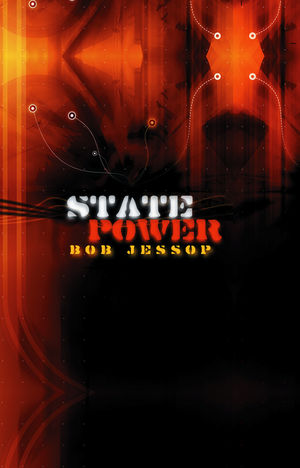State PowerISBN: 978-0-7456-3320-6
Hardcover
200 pages
February 2008, Polity
 This is a Print-on-Demand title. It will be printed specifically to fill your order. Please allow an additional 10-15 days delivery time. The book is not returnable.
Other Available Formats: Paperback
|
||||||
List of Boxes, Figures and Tables.
Acknowledgments.
General Introduction.
What is the State?.
A Preliminary Definition of the State.
‘Putting this Book in its Place’.
PART I: THEORIZING THE STATE.
1. The Development of the Strategic-Relational Approach.
Three Sources of the Strategic-Relational State Approach.
The First Phase in the Strategic-Relational Approach.
The Second Phase of the Strategic-Relational Approach.
The Third Phase of the Strategic-Relational Approach.
Interim Strategic-Relational Conclusions.
2. Bringing the State Back in (Yet Again).
Introduction.
The Marxist Revival and the Strategic-Relational Approach.
Strategic-Relational Tendencies in the Second Wave.
New Directions of Research.
Conclusions.
PART II: SOURCES OF THE STRATEGIC-RELATIONAL APPROACH.
3. Marx on Political Representation and the State.
What does The Eighteenth Brumaire accomplish?.
On Periodization.
The Political Stage.
The Social Content of Politics.
The State Apparatus and Its Trajectory.
More on Political Representation.
Conclusions.
4. Gramsci on the Geography of State Power.
Spatializing the Philosophy of Praxis.
Gramsci and the Southern Question.
Gramsci on Americanism and Fordism.
Gramsci on Territoriality and State Power.
Gramsci and International Relations.
Conclusions.
5. Poulantzas on the State as a Social Relation.
Marxist Theory and Political Strategy.
New Methodological Considerations.
The State and Political Class Struggle.
The Relational Approach and Strategic Selectivity.
Re-Reading Poulantzas.
Exceptional Elements in the Contemporary State.
Periodizing the Class Struggle.
The Spatio-Temporal Matrix of the State.
Conclusions.
6. Foucault on State, State Formation, and Statecraft.
Foucault and the “Crisis of Marxism”.
Poulantzas and Foucault compared.
The Analytics of Power versus State Theory.
Foucault as a Genealogist of Statecraft.
With Foucault beyond Foucault.
Conclusions.
PART III APPLYING THE STRATEGIC-RELATIONAL APPROACH.
7. The Gender Selectivities of the State.
Analyzing Gender Selectivities.
Gender Selectivities in the State.
Strategic Selectivity and Strategic Action.
Political Representation.
The Architecture of the State.
Conclusions.
8. Spatiotemporal Dynamics and Temporal Sovereignty.
Globalization Defined.
Globalization and the Spatial Turn.
Some Spatio-Temporal Contradictions of Globalizing Capitalism.
The Implications of Globalization for (National) States.
Conclusions.
9. Multiscalar Metagovernance in the European Union.
State-Centric Perspectives.
Governance-Centric Approaches.
Changes in Statehood in Advanced Capitalist Societies.
The EU as a Schumpeterian Workfare Post-National Regime.
The European Union and Multiscalar Metagovernance.
Conclusions.
10. Complexity, Contingent Necessity, Semiosis, and the SRA.
Complexity and Contingent Necessity.
Complexity and the Selection of Selections.
Semiosis and Complexity Reduction.
Towards a New Strategic-Relational Agenda.
Conclusions.
Original Sources of Chapters.
Bibliography.
Name Index.
Subject Index



